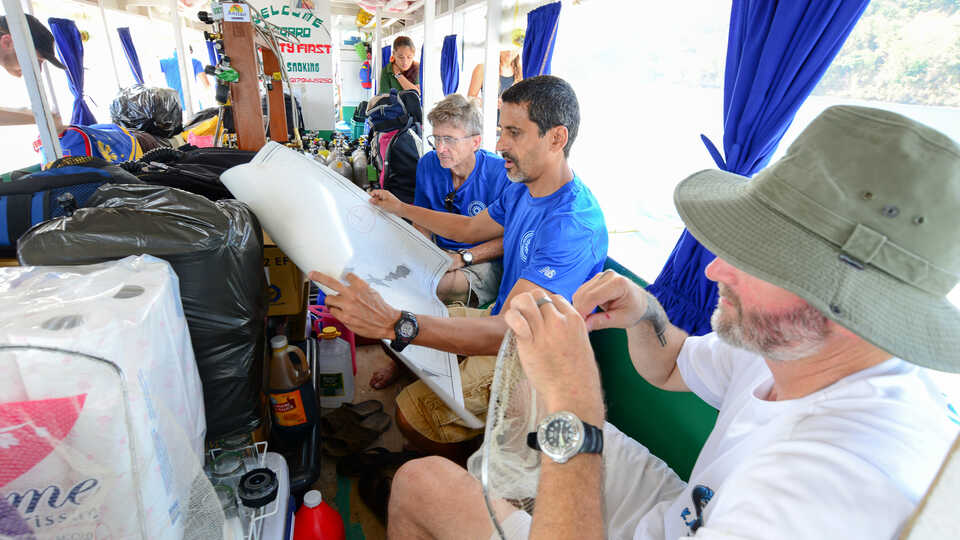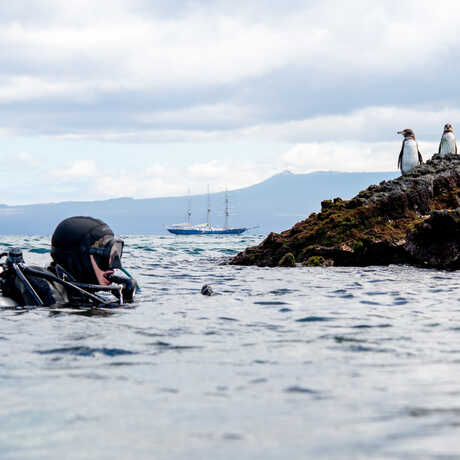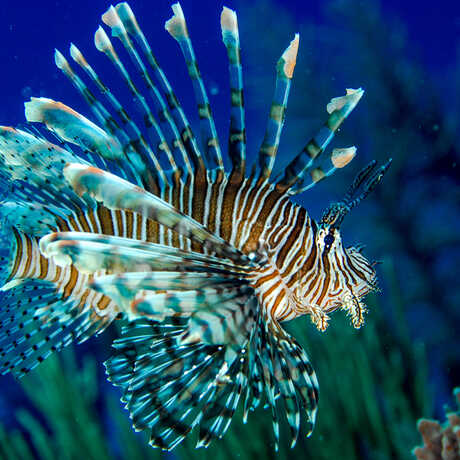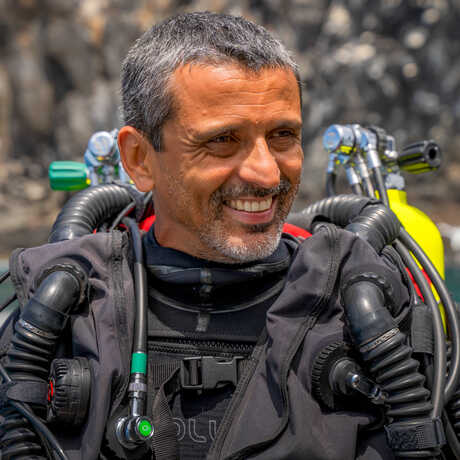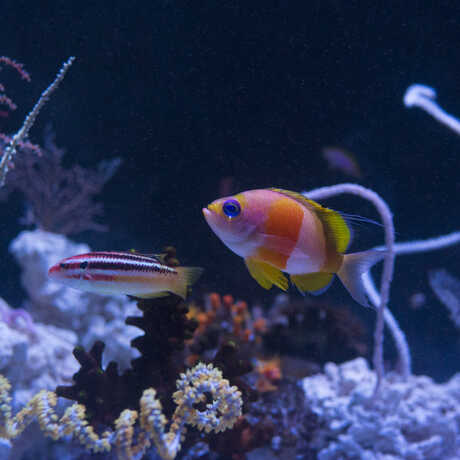Scientist Spotlight
Luiz Rocha
Luiz Rocha is a frequent visitor to the ocean's mysterious and seldom-visited "twilight zone," where he studies the ecology and evolution of coral reef fishes.
Half kid, half fish

For ichthyology curator Luiz Rocha, childhood was defined by fish and sea. “I had tanks starting from age 5 or 6,” he says, “and I decided to be a biologist when I had my first biology class in third grade. I’ve just always had this attraction to going out in the ocean.”
Every day after school, Rocha would stop at aquarium stores in his Brazilian hometown and stare at fish for hours, until “sometimes my mom would go nuts.” By high school, he had roughly 2,000-gallons-worth of fish tanks and was regularly investigating the clear, accessible reefs just offshore. “I used to make little boats to go out to the reef for snorkeling,” he recalls, “and pretty soon I was collecting fish to sell back to the aquarium shops.”
But as much as he loved, read about, and studied the ocean—consuming books, movies, and anything he could find about Jacques Cousteau—Rocha confesses he wasn’t exactly a star pupil in biology classes, at least at first. “But that’s because they weren’t always about fish,” he laughs. “There was a lot of cell biology and related disciplines that I didn’t completely like. But whenever it came to zoology or anything to do with animals,” he adds, “I was on top of it.”
These days, Rocha regularly descends into the cellular level, using advanced DNA sequencing to answer some of his field’s biggest questions. From the spread of invasive species to the very origins of fish diversity, he works in labs, on boats, and in water as deep as 500 feet to advance our understanding of Earth’s oceans.
Lionfish in the deep
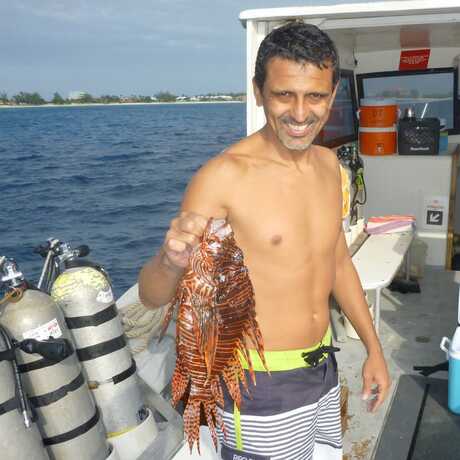
One of Rocha’s ongoing projects is to track the invasion of non-native lionfish throughout the Caribbean. A beautiful but voracious fish, this venomous member of the Scorpaenidae family has no natural predators in the Caribbean—its spread is thought to have started with Floridians releasing “pet” lionfish into the ocean as they outgrew home tanks.
While most Caribbean countries and areas are now aware of the lionfish’s ability to severely disrupt reefs food chains (“they can wipe out some species before we even know those species exist,” Rocha adds), addressing the problem isn’t easy. The most common strategy is to encourage people to hunt and eat lionfish, but as part of the Academy’s “twilight zone” dive team, Rocha has documented deep-reef populations of lionfish that are far below where any regular scuba diver or hunter can venture.
“People knew they were down [at 200–500 feet and below], but I don’t think anyone knew there were so many; nobody thought the density was as high as we’ve shown it is in some areas—and that has big implications for control issues,” he says. “If shallow populations are replenished by the deep lionfish, then culling by recreational divers won’t have much of an effect.”
To test that, Rocha and the rest of the twilight-zone team collect lionfish throughout the Caribbean for DNA and stomach-contents analysis, which lets them determine whether shallow and deep lionfish populations are related, and what native species the fish are impacting. Sound like a tough job? It often is—but it does help that lionfish are delicious.
Remapping new discoveries
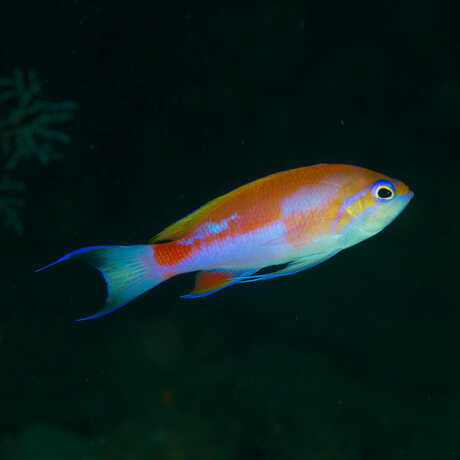
For Rocha and many other scientists at the Academy, advances in genomics are changing the questions (and answers) that define their work. “Not only are we able to answer questions we never could before,” he says, “but now we have the right type of data to ask questions we didn’t even think about in the past. It’s really incredible.
“Two or three years ago, the norm for establishing the relationship between species in a group was four or five genes. With these new methods, we can get as much as 2,000 or 3,000 genes for every individual in the relationship tree. It’s incredible.”
The ability to more accurately place animals on that tree has huge implications, Rocha points out, for everything from species discoveries, to our understanding of how biodiverse places came to be, to our ability to craft conservation policies that can protect those complex ecosystems today. But he’s particularly interested in figuring out what factors cause one species to differentiate into two (or more!)—and that requires knowing exactly what fishes you’re dealing with.
“Until a very short time ago,” says Rocha, “people would often conservatively decide that fish with just a little bit of color variation were all the same species. But a lot of times when we start looking at their genetics, we see that they’re actually very different; they’re not exchanging genes at all. So there’s been a lot of resurrecting names, or negatively validating names, or outright describing animals as new species. It’s a sort of Wild West of correcting and reclassifying things that continuously changes and advances what we know,” he says, laughing. “It’s incredibly exciting.”
Department: Ichthyology
Title: Curator and Follett Chair, Ichthyology
Videos:
2021 Rolex Awards Laureate
Documentary: Luiz Rocha
Academy Outreach
The Human Impact
Understanding Fish Diversity
Related websites:
Twitter: @CoralReefFish
Instagram: @CoralReefFish
IBSS staff page
2021 Rolex Awards project
Scientist at Work
The Department of Ichthyology is home to one of the largest and most important collections of fishes in the world, and is designated as one of eight International Centers for Ichthyology in North America. Meet the researchers, explore projects and expeditions, and more.
